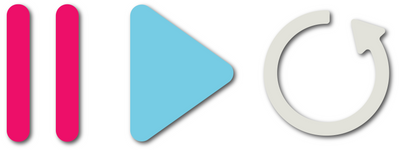WAIT!
This is A One-Time Offer ONLY! You Will Never See This Page Again!

What You Get

Chapter 1
Sounds
Before diving into the details of mixing, we need to look at some properties of sounds in general. This section is background information, but it is necessary to understand its contents in order to grasp a lot of the basic principles of mixing.
A sound is a pressure wave traveling through the air. Any action which puts air into motion will create a sound. Our auditory system systematically groups the pressure waves that hit our ears into distinct sounds for ease of processing, much how our vision groups the photons that hit our eyes into objects.
But, just like our vision can divide visual objects into smaller objects (a “person” can be divided into “arms,” “legs,” a “head,” etc.), our brains can analytically divide sounds into smaller sounds (for instance the spoken word “cat” can be divided into a consonant ‘k’, a vowel ‘ahh’, and another consonant ’t’). Similarly, just as our vision can group collections of small objects into larger objects (a collection of “persons” becomes a “crowd”), our brains can group collections of sounds into larger sounds (a collection of “handclaps” becomes “applause”).

Chapter 2
Mixing Preparation
In this section we will look at some things that you need to think about before you set out to mix a track.

Chapter 3
Mixing Usage
Having spent some time working on prerequisites, we will now move into issues directly related to mixing.
The most important tool for mixing is the mixer. Most DAWs today include mixers as a built-in basic feature. These mixers are traditionally modeled after analog hardware mixers, and share a lot of the same principles of operation. This guide assumes that you are using a software-based DAW mixer.
A mixer consists of a series of channel strips. Each of these channel strips will correspond to one of the sounds in your mix: a virtual instrument, a drum kit, or a recorded vocal performance, for instance. Each channel strip contains a variety of tools to manipulate the sound going into it. The purpose of the mixer is to perform these manipulations, and then mix together the sounds coming from each channel strip, creating one audio signal that is the sum (both in the intuitive and mathematical sense) of all of the separate audio signals.

Chapter 4
Equalization
In this chapter, we arrive at the next big topic in mixing: that of equalization. Equalization, or EQ, is the process of changing the balance of the frequency components of sounds.

Chapter 5
Introduction to Compression
Compression is the process of shaping the dynamics of sounds. A compressor is an automated volume control. It automatically adjusts the volume of the input signal in response to changes in volume in the signal itself.
Compressors are difficult to learn to use, for several reasons. They have many different and unrelated purposes. They have complex mechanics of operation, and it is necessary to understand these mechanics in order to operate them. Their effect on the sound is not always readily audible. And finally, the specific things that one has to do to get good results out of them are routinely very different from what one would intuitively expect.

Chapter 6
Introduction to Space Manipulation
The sound in a stereo audio recording can be seen as being arranged in a three dimensional “sound stage.”
A sound does not usually occupy a single point on any of these axes; rather, it is a three-dimensional “blob” in the sound space.
The X (width) axis of the sound stage is stereo position.
The Y (height) axis is pitch, with higher-pitched sounds appearing higher in the sound stage.
Finally, the Z (depth) axis is distance, with more prominent sounds appearing closer to the front of the sound stage.
In this section, we will look at the tools that allow one to manipulate the sound stage; to move sounds forward, back, and to the sides in the mix. We will not consider how to move a sound up or down in the mix
What Students Are Saying...

This course is so awesome, it really covers everything I need to know about mixing. The information and tips are priceless... it really lifts the curtain. Thank you so much, and well done. You Rock!!
Chris Maiken
Frequently Asked Questions...
When does the course start and finish?
The course starts now and never ends! It is a completely self-paced online course - you decide when you start and when you finish.
How long do I have access to the course?
After signing up, you'll have unlimited access to this course.
What if I am unhappy with the course?
We would never want you to be unhappy! If you are unsatisfied with your purchase, contact us in the first 30 days and we will give you a full refund.
